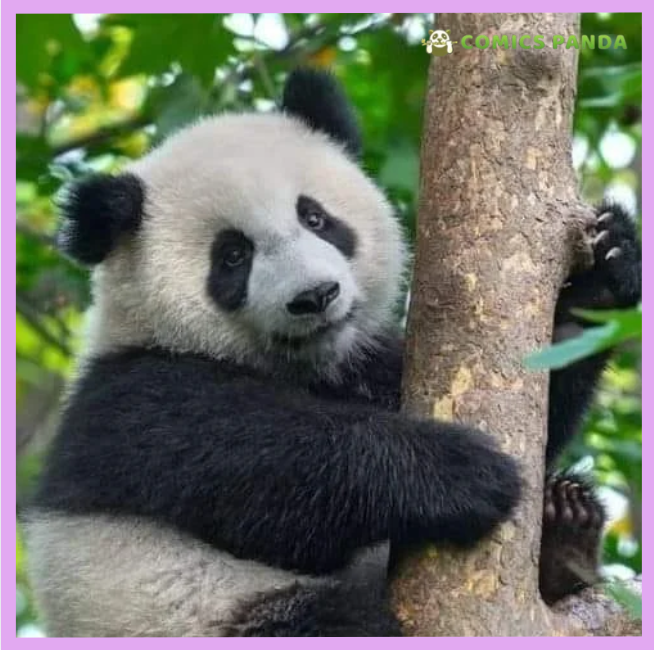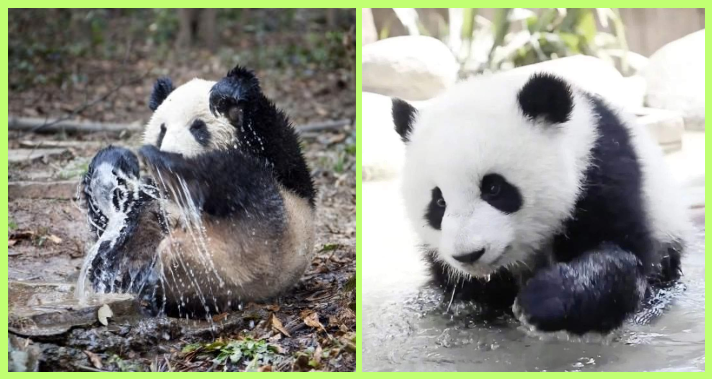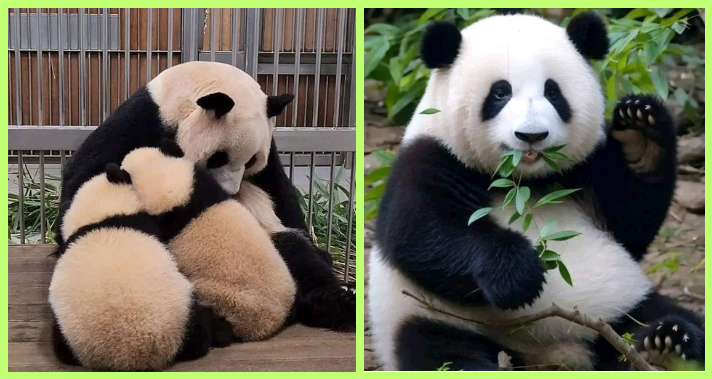Panda may seem slow and heavy but they are amazing climbers. On the wild side they are often suspected of taking their repose at a long distance in the trees, upon branches and in moving softly. Their climbing skills are not only shocking, but they are also important in terms of their safety and comfort. Even though they have gigantic round bodies, pandas can even balance themselves easily when climbing at the tall trees in the Chinese forests. This blog dives into how the pandas manage to balance when climbing, as well as what constitutes their bodies perfectly to be in balance while climbing.
How Pandas Keep Their Balance
The first reason why panda can keep balance good is because of their body is strong and flexible. Their muscles are heavy, particularly in the shoulders and the legs. These muscles help them to carry their own weight while climbing and hold on tightly to trees. Their bones are heavy whereas they are strong and their bones provide them with stability. Their arms and legs are used in integration, when climbing. The front paws grip the tree tightly as the legs behind push the body up. They move slowly and carefully using steady strength rather than strength and speed. Their enormous body may appear to be a challenge to keep their balance, but it helps them stick close to the tree’s surface where their body center of gravity is on the low and stable side.
Panda have strong paws which act as tools for climbing. Each paw has five fingers and it has a special bone that looks like a thumb. This structure aids them to grip tree bark close up. Their claws are sharp, curved and strong. These claws puncture into the wood, and therefore they can climb without sliding. When a Panda climbs it puts its paws down carefully and pushes its claws deep into the bark. The way the claws are curved even helps them to hold on to the bridge even when they are leaning to one side. Their paw pads are rough and help them to prevent slipping in wet or smooth surfaces. Together, the claws and the paw pads help to keep them secure even at great heights.
#1. Pandas hold the tree very strongly

#2. A cute panda having rest at the top of the tree

To balance while climbing is not just about strength, but also co-ordination. Pandas walk in a manner that brings one of their limbs at a time in a slow and thoughtful manner. They ensure they get each paw down firmly before bringing through the next paw. This careful movement prevents eliminating on the sudden slip or shift of weight. The sense of balance they are equipped with is done by the inner ear, muscles, and the brain together. When they move up or down their body is able to automatically adjust its placement. The tail is also short although it also helps a little in that it provides some extra support while moving or resting on branches.
#3. It can be seen that even baby panda can climb tree

#4. This is how pandas balance themselves in tree

Pandas are not fast climbers. They have a crept-type style of climbing. They are not rushing and making sudden jumps. This slow movement helps them to stay balanced as their body weight is evenly distributed. Each step is deliberate. They wrap their arms around the tree like a grip and press their body up to it and slowly change weights. This comes as they have full control of balance also on thin branches. Their patience is one of their greatest advantage when climbing tall trees. When pandas climb, they do not simply rely on their body strength – in climbing to be exact. There they use the structural shape of the tree as support. They push their chest, arms and legs against the trunk which helps distribute the weight evenly. By hugging the tree, they ensure that they don’t fall.
#5. A group of panda having some discussion

#6. Perfect click

Branches also offer up natural balance points. Pandas like to often stop and rest on branches that are strong enough to support their weight. In this way, they select spots that they are comfortable sitting in without falling through. The placement of the tree and branches is used to find balance when they are moving to higher or resting. One of its key components for maintaining balance is a fake thumb which, really, is a long bone called in its own layer. This bone helps them in grasping objects such as tree trunks and branches. While doing the climb, the fake thumb helps to provide extra grip and stability. It is like a little hook that helps them to hold on when they are adjusting their position. This thumb-like feature functions with them and their claws, as well as keep their grip secure and balanced.
#7. It’s relax time for the baby panda

Panda may look round but their body is flexible. Their joints in shoulders, elbows and wrists are freely moving, enabling them to adapt positions easily while climbing. This flexibility aids for them to balance on uneven grounds. Also, their back legs are strong and flexible. They are able to flex their entire body deeply and push up with tremendous force. When they descend they turn slightly and use their back paws first with a balance and they go down slowly. This technique helps take care of not falling down and helps them control every move.
#8. Pandas loves to rest on the trees

Sometimes it happens that pandas climb trees not only for changing their location, but also to relax. They tend to sleep on branches at great heights away from the ground. To keep their persons safe, they pick wide, strong branches that they can support their own weight without breaking. They lie down in such a way as to keep their body in close contact with the branch so as to reduce the possibility of their slipping. Their paws, on the other hand, hold the sides lightly, and their total weight is well distributed. Their natural body shape of broad and heavy in the middle helps them to remain balanced even when they sleep. Pandas are extremely calm animals for climbing. They do not panic and do not move quickly even if the wind is blowing or branches are shaking. Their calm nature helps them to stay balanced as sudden movements can cause loss of stability.
#9. Never seen a panda tree before

By maintaining a constant speed and being conscious of surroundings, they measure risks. Their natures educate them to the selection of the safest trees and paths. They are naturally balanced on their careful and thoughtful climbing behavior. The type of forest where pandas live is populated with a lot of tall trees, uneven ground and slippery surfaces. Over time, their body is adapted to these conditions. Their muscles, paws, claws and balance have all evolved according to their lifestyle. They don’t just climb for sheer enjoyment though they are also safer up there and at times need to rest and there’s always the issue of harsh weather or the need to get at the better bamboos. The fact that they can climb safe on tall trees gives them a big advantage in their environment. It gives them freedom to move around the forest without any fear.
#10. Love to see this panda

Panda is a peaceful animal which live with their surroundings. Their capability of going high up in tall trees while holding on to them shows just how perfectly formed their bodies are by nature. Their paws, claws and muscles are used in movements with quiet self-assurance. They do not need speed and agility to master the trees they just need patience, strength and balance. Each time a panda climbs it illustrates the ability for a very peaceful creature to have so much control and grace. Living peacefully in their mute forests, pandas make us remember that power or speed does not necessarily be our strengths. Sometimes, it is the patience, steadiness, and just being able to balance every step. And in case you liked this blog, share them with other people and read more panda blogs and wildlife at our website.




